Your dog’s coat shows their health. Shiny fur and clear skin mean good nutrition. But dull hair, flakes, and itching might mean they’re missing important nutrients.
Omega-3 fats are crucial for dogs. They can’t make these fats themselves. Fish-based dog food provides EPA and DHA in a form dogs easily use. They’re simple, delicious, and fit easily into your life.
We’ll share three recipes focused on fish: salmon, sardine, and mackerel. Each recipe is aimed at improving your dog’s coat. They’re easy to follow and include tips to keep the nutrients in. Flax and chia add extra benefits without taking over the dish.
Vets and researchers see the perks: smoother skin, less hair loss, and more shine. These recipes also support the joints, heart, brain, and immune system. If you use supplements, pick trusted fish or krill oil. Choose fish that are low in salt and mercury. Always check with your vet about the right dose.
Are you ready to make meals filled with love, flavor, and health benefits? The recipes below make it simple to give your dog tasty, nutritious food.
Why Omega-3s Matter for Skin, Coat, and Whole-Body Health
Dogs need certain fats from their diet, starting with omega-3s. These fats help with energy, hormones, soaking up vitamins, and brain health. When their food has too much grain or corn-fed meat, they might not get enough omega-3. Adding fish to their diet can fix the balance, making their coat and skin healthier.
Essential fatty acids: balancing Omega-3 and Omega-6 for dogs
Fish like salmon, sardines, and mackerel are great for dogs. They give them the right kind of omega-3s. These can limit too much omega-6, which can make a dog’s skin dry and itchy and help their joints. A good balance shows on the outside first, with softer fur and happier skin.
Dog owners who cook at home just need to add a bit of fatty fish or some fish oil. This helps with heart health and keeps their coat and skin looking good every day.
Benefits supported by experts: shinier coat, healthier skin, joint and heart support
Different vets recommend fish for various reasons. Dr. Karen Becker suggests sardines for heart health. Dr. Amy Caldwell talks about how fish oils can support older dogs’ joints and focus. Also, Dr. Julie Evans likes mackerel for its antioxidants. All these benefits add up to less fur shedding, easier moving, and more energy.
Managing inflammation is key. Regular omega-3 intake helps joints feel better in both young and older dogs. It also means a shinier coat that shows a dog is healthy overall.
Puppies to seniors: cognitive development, immune support, and aging well
For puppies, omega-3 helps with their vision, memory, and how well they learn during training. It’s good for their growing immune system too. The right diet supports their growth in a healthy way.
For older dogs, omega-3 means less stress, better movement, and clearer thinking. Steady omega-3 intake is linked to heart health and helps during long-term care. It also keeps their coat and skin in great shape.
Top Omega-3 Sources for Dogs: Salmon, Sardines, Mackerel, and Smart Plant Options
Healthy fats are key for shiny coats and lasting energy. Dogs do best with both marine and plant sources, ensuring they get EPA, DHA, and ALA. Stick to small portions, change up proteins, and pick foods without extra salt.
Fatty fish favorites: bioavailable EPA and DHA from salmon, sardines, and mackerel
Salmon is great for dogs. It supports the brain, heart, and muscles. Sardines pack lots of omega-3s plus calcium and vitamin D for strong bones and teeth. Mackerel provides valuable vitamin B12 and selenium for joints and metabolism.
Make sure fish is boneless or remove bones yourself. It’s best served cooked or canned in water, salt-free. Rotate these options weekly for diverse and nutritious meals.
Low-mercury choices and antioxidant boosts: sardines and krill oil
Sardines are safe for daily feeding, especially for small dogs. They blend well into any meal. Krill oil adds powerful antioxidants to protect fats from going bad.
Choose marine oils that show EPA and DHA amounts per serving. Keep them cold and tightly sealed to maintain taste and benefits.
Plant-based helpers: flax, chia, and hemp for skin and coat balance
Flaxseeds provide fiber and lignans that improve digestion and skin health. Chia seeds are high in ALA and help with hydration. Hemp seeds have a balanced omega-6 to omega-3 ratio to soothe itchy skin.
Use freshly ground flax or pre-milled for better absorption. Soak chia seeds to gel them up. Hemp hearts are a nice, nutty finish.
Quality and dosage notes for oils and toppers
Go for clean, tested oils or capsules. When using fish oil, follow the recommended dose for your dog’s size. Check with your vet first, especially if your pet is on medication or has health issues. Start with small amounts and monitor your dog’s digestion and appetite.
Add omega-3 toppers to enhance flavor and add moisture to meals. A simple drizzle or precise pump ups the EPA and DHA without too many extra calories. This makes every meal beneficial.
Fish-Based Dog Food Recipes
These recipes are great for dogs, offering meals rich in omega-3. They’re easy to make with real food. You’ll need protein, some veggies, and a bit of carbs. Remember, use unsalted canned fish and adjust the amount based on your pup’s size.
Salmon and Sweet Potato Bowl for glossy coats and muscle support
This salmon and sweet potato recipe will make your dog’s coat shine and muscles strong. Just mix 1 cup of cooked salmon with 1/2 cup sweet potato. Add 1/2 cup green beans and a teaspoon of flaxseed oil for extra health benefits.
Mix everything well and let it cool before your dog tries it. This meal is a perfect part of any omega-3 rich diet, especially with regular play.
Sardine and Quinoa Power Meal with flax for skin and heart health
This sardine and quinoa meal is easy and healthy. Just stir 1/2 cup sardines into cooked quinoa. Add a tablespoon of ground flaxseed and 1/2 cup spinach for even more nutrients.
Sardines give your dog omega-3s without mercury risk, and quinoa is a great protein source. Let it cool after mixing, so it’s safe for your dog to eat.
Mackerel and Pumpkin Stew to soothe skin and aid digestion
Try this mackerel and pumpkin stew for a soothing meal. Use 1/2 cup mackerel, pumpkin puree, a teaspoon of oil, and green peas. Blend steamed fish and peas with pumpkin and oil for a light stew.
It’s great for your dog’s skin and digestion. Serve it lukewarm and keep portions small for dogs with sensitive bellies.
Preparation tips: safe handling, no added salt, and cooling before serving
Be careful when preparing fish: remove any bones and skin. Use only water-packed fish, avoiding salt and unhealthy oils. Skip any seasoning that could harm your dog, like garlic or onion.
You can add these fish meals to kibble too. Remember to let any dish cool fully before giving it to your dog. This keeps meals safe and nutritious.
Feeding Guidance and Safety for Homemade Omega Boost Meals
Begin with small steps. Give your dog omega-rich food 2–3 times a week, then watch how they feel and look. Pay attention to how much you feed, based on your dog’s size and how active they are. For dogs with itchy skin or sore joints, check with your vet about omega-3s before using them every day.
When picking fish, go for types that are safe for dogs and keep things simple: no bones, salt, or spices. Choose fish like sardines or North Pacific salmon that have low mercury levels. For canned fish, opt for ones with less sodium and rinse them off. Make sure to let cooked food cool down before giving it to your dog, and store leftover food in the fridge quickly.
Getting the right balance is key. Many dog foods have too much omega-6, which can upset the balance, so adding omega-3s can help keep your dog’s skin smooth and their fur shiny. Try adding wet food as a topping to their dry food to make it more appealing and help adjust the amount of omega-3 for their age—puppy, adult, or senior.
If fish isn’t an option, supplements can be a good choice. Pick a fish oil that’s been checked for safety and follow the recommended amount for your dog’s size. Krill oil can be a good option since it’s absorbed well and has astaxanthin, which helps keep it from going bad. Steer clear of products with extra stuff added and keep oils in a cool, dark spot.
Be on the lookout for signs of getting too much, like upset stomach, fishy smell, or bruising easily. Taking too much can make blood too thin, so be careful with the amount and talk to your vet if your dog is on certain medicines. Check how your dog is doing each week and adjust the fish oil as needed.
When trying semi-raw fish, choose high-quality types and handle them safely. Keep everything clean, thaw seafood in the fridge, and throw away any leftovers that aren’t eaten. Keep track of what your dog eats and how much omega-3 they get. This way, you can be sure about the food amounts and make changes with confidence.
Conclusion
Focusing on nutrition first really shows in your dog’s health. A diet rich in omega-3s, using Fish-Based Dog Food Recipes, improves skin comfort and supports joint and heart health. It also gives dogs a shiny coat that owners love. The type of omega-3s matters, with those from fish working better than plant-based ALA.
Feeding your dog salmon, sardines, and mackerel means they get the best omega-3s with every bite. Sardines are great because they’re low in mercury and full of natural CoQ10. Krill oil is also beneficial, providing the powerful antioxidant astaxanthin. Though plant sources like flax, chia, and hemp are good, they’re not as effective as fish oil.
Recipes like Salmon & Sweet Potato Bowl, Sardine & Quinoa Power Meal, and Mackerel & Pumpkin Stew are easy and safe. They don’t have added salt, and they’re carefully prepared. Such meals support dogs’ health from when they’re young to when they’re old. They help with brain development, immune system, reducing inflammation, and arthritis. Plus, they keep coats glossy.
The fish-first method is practical for families everywhere. By mixing fish options with smart plant choices, owners can make homemade omega-3-rich meals easily. Always check with a vet before starting. This way, Fish-Based Dog Food Recipes can be a dependable way to keep your dog healthy, inside and out.








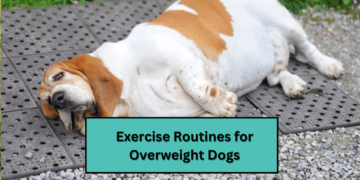

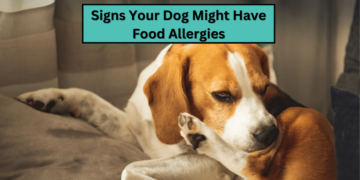

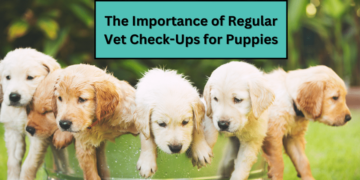
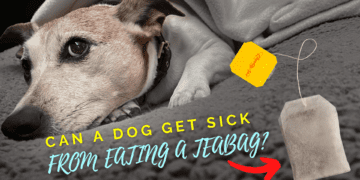

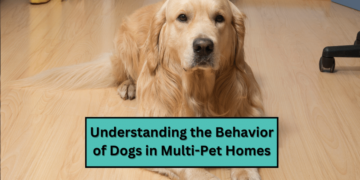

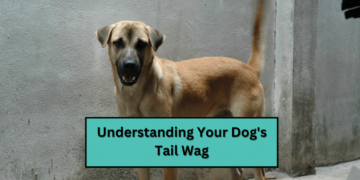
































Discussion about this post